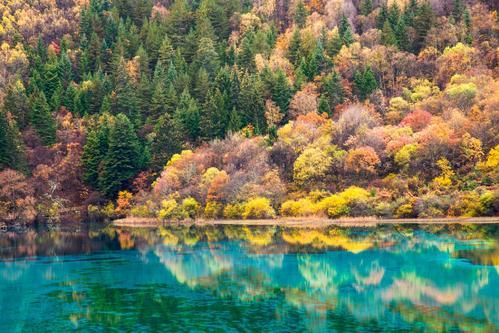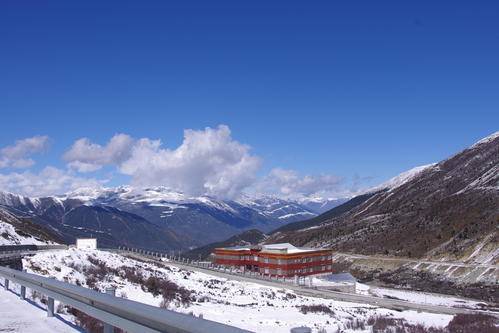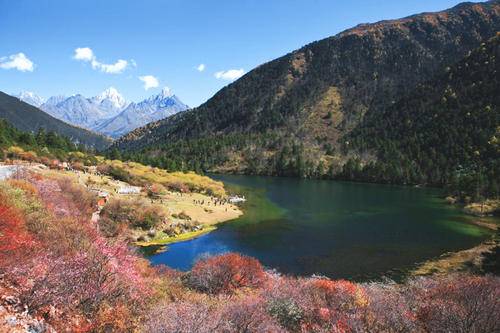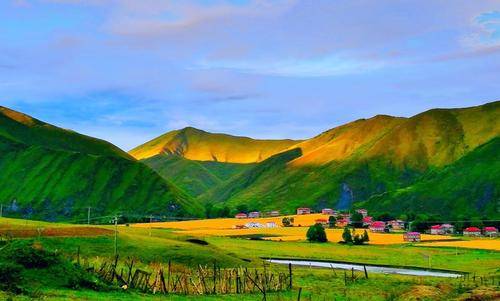Kangding
Kangding, a world-renowned historical and cultural city; a Mount Paoma, famous across the globe; a song 'Kangding Love Song', an eternal classic, enchanting people worldwide. Kangding City is located in the eastern part of Ganzi Tibetan Autonomous Prefecture in Sichuan Province and is the capital of Ganzi Prefecture. Kangding has a long and splendid history and culture, serving as the throat of Sichuan-Tibet, a key town on the Ancient Tea Horse Road, and a center of Tibetan-Han cultural exchange. Since ancient times, it has been the political, economic, cultural, commercial, information center, and transportation hub of the Kham Tibetan area. The city covers an area of 11,600 square kilometers and is a multi-ethnic city predominantly inhabited by Tibetans, along with Han, Hui, Yi, Qiang, and other ethnic groups.
Dujuan Gorge
Dujuan Gorge is a splendid belt in the Mugecuo Scenic Area. It connects Qise Lake to the east and Yeren Lake to the west, stretching 6 kilometers. Within the gorge, the stream sometimes rushes and sometimes flows gently, with splashing water droplets. The banks are lush with trees, particularly notable for the original rhododendron forest. The flowers bloom from mid-April to July, with a blooming period lasting up to 4 months. (The opening status may change, please check local information before departure.)
Honghaizi Valley
Kangding Honghaizi is almost unknown to most people. It is located behind Kangding Airport on Zheduo Mountain, on the loop line from Mugecuo to Tagong. Most people pass by it and head straight to Tagong Grassland.
Jiangba Grassland
Jiangba Grassland is located on the Kangding travel loop, about an hour's drive from Kangba County. It is situated in Jiangba Village and is part of the Tagong Grassland. It is a famous attraction on the travel loop. There are many yaks on the grassland, and in spring, the green stretches as far as the eye can see.
Tagong Grassland
Tagong Grassland Scenic Area is located in Kangding County, Ganzi Tibetan Autonomous Prefecture, Sichuan Province, 113 kilometers northwest of Kangding City, at an altitude of 3730 meters. The Sichuan-Tibet Highway passes through the area. 'Tagong' is Tibetan for 'the place loved by Bodhisattvas'. It is the most famous grassland in Ganzi Prefecture with convenient transportation. Traveling westward from Kangding along the Sichuan-Tibet line, crossing Zheduo Mountain, and heading north after passing Xinduqiao, you will reach Tagong Monastery. The scenic area is composed of rivers, grasslands, forests, mountains, temples, Tibetan houses, and rich Tibetan customs along the route.
Tagong Monastery is a famous Sakya (Flower Sect) temple in Ganzi Prefecture. With a history of over a thousand years, it is an important pilgrimage site for Tibetan people in the Kham region. In Ganzi Prefecture, Tagong Monastery, along with Yaqing Monastery and Larung Monastery (Sertar Buddhist Institute), are renowned large monasteries.
Xinduqiao Town is located at the north-south fork of National Highway 318 on the Sichuan-Tibet line. Its beautiful scenery, magical light, boundless grasslands, winding creeks, golden poplars, undulating mountains, well-arranged Tibetan villages, and scattered cattle and sheep attract tourists and photography enthusiasts from all over the world... It is known as the 'World of Light and Shadow' and 'Paradise for Photographers'.
Zheduo Mountain is located within the Ganzi Prefecture of Sichuan Province. It is part of the Daxue Mountain range and serves as an important geographical boundary. To the west lies the plateau uplift area with the Yalong River, and to the right is the high mountain gorge area with the Dadu River. The highest peak of Zheduo Mountain reaches an altitude of 4962 meters, and the mountain pass is at an altitude of 4298 meters, with an elevation difference of 1800 meters from Kangding City. It is the first high mountain pass that needs to be crossed on the Sichuan-Tibet line, hence it is known as the 'First Pass of Kham'. Zheduo Mountain is not only the watershed between the Dadu River and Yalong River basins but also the cultural boundary between Han and Tibetan cultures. Crossing Zheduo Mountain marks the official entry into the Kham Tibetan area.



















